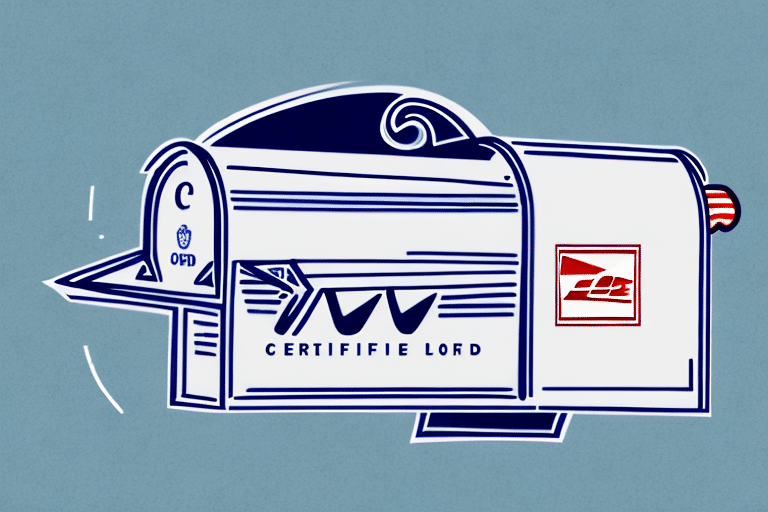Understanding Certified Mail
Certified mail is a service provided by the United States Postal Service (USPS) that allows you to send important documents and packages with an added level of security. It provides the sender with a mailing receipt and a unique tracking number that can be used to verify delivery. Additionally, the sender can request a return receipt to receive proof that the item was delivered. Certified mail is often used for legal documents, tax returns, and other crucial papers.
Certified Mail vs. Registered Mail
While both certified and registered mail offer tracking and security, registered mail provides an even higher level of protection and includes insurance coverage. Registered mail is more expensive and is recommended for extremely valuable items or sensitive information that requires maximum security.
How Certified Mail Works
When sending certified mail, the sender brings their item to the local post office, where it is assigned a unique tracking number and stamped with a signature confirmation barcode. Once the item is processed, the sender receives a tracking number and a mailing receipt. The recipient must sign for the package upon delivery, triggering a return receipt to be mailed back to the sender.
Certified mail ensures proof of mailing and delivery, which is especially important for legal or business documents that require a delivery record.
Benefits of Using Certified Mail
There are several benefits to using certified mail, including:
- Added Security: Certified mail provides an additional layer of security, ensuring that your item is tracked and only received by the intended recipient.
- Proof of Delivery: With a signature required upon delivery, you have confirmation that the item was received.
- Legal Evidence: Certified mail can serve as legal proof of mailing and delivery, which is useful in disputes or legal proceedings.
- Tracking: The unique tracking number allows you to monitor the item's journey to its destination.
Types of Certified Mail Services
The USPS offers various types of certified mail services to cater to different needs:
Basic Certified Mail
Includes a mailing receipt and tracking information.
Certified Mail with Return Receipt
Provides proof of delivery via a postcard or electronic confirmation.
Restricted Delivery
Ensures that only a specific individual can receive the item by requiring ID upon delivery.
Additional Services
Options such as insurance can be added for valuable items, providing extra protection during transit.
Understanding Certified Mail Fees
Certified mail fees vary based on several factors, including the level of service, the weight and size of the item, and the distance it will travel. As of 2023, the basic fee for certified mail starts at $3.75, with additional costs for services like return receipts and restricted delivery.
Factors Affecting Fees
- Service Level: Basic certified mail is less expensive than services that include return receipts or restricted delivery.
- Weight and Size: Heavier and larger items cost more to send.
- Distance: The distance the mail travels can impact the fee, with longer distances typically incurring higher costs.
- Additional Services: Services like insurance or return receipts add to the overall cost.
Additional Fees
Besides the basic certified mail fee, additional fees may apply for:
- Return receipts ($2.85 for standard or electronic receipts)
- Restricted delivery ($3.65)
- Insurance for valuable items (cost varies based on coverage amount)
Tips for Saving on Certified Mail Fees
- Accurate Weight Measurement: Use a scale to ensure your item's weight is accurately measured to avoid overpaying.
- Selective Services: Only opt for additional services that are necessary for your mailing, avoiding unnecessary costs.
- Off-Peak Shipping: Consider sending certified mail during non-peak times to potentially benefit from lower rates.
Comparing Certified Mail with Other Mailing Services
While USPS's certified mail is a reliable option, other mailing services like FedEx and UPS offer similar tracking and proof of delivery services. It's essential to compare their fees and service levels to determine which option best suits your needs. For instance, FedEx offers services like FedEx Registered Package, which provides similar tracking and security features.
Common Mistakes to Avoid When Using Certified Mail
Avoiding common errors can ensure your certified mail delivery goes smoothly:
- Incorrect Addressing: Double-check the recipient's address to prevent delivery failures.
- Overestimating Weight: Ensure your item's weight is accurately measured to avoid unnecessary fees.
- Incomplete Forms: Fill out all required forms completely and accurately to prevent processing delays.
Tracking and Proof of Delivery
One of the primary advantages of certified mail is the ability to track your item and obtain proof of delivery. You can monitor your item's status using the unique tracking number provided at the time of mailing on the USPS website. Additionally, requesting a return receipt offers tangible proof that your item was delivered and received by the intended recipient.
In summary, while certified mail fees add to the cost of sending items through the postal service, the additional security, tracking, and proof of delivery make it a valuable service for important and sensitive documents. By understanding the various aspects of certified mail fees and utilizing tips to manage costs, you can effectively send your items with confidence.






















